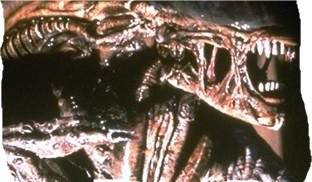Lecture includes:
- Charteristics of new digital media
- Definition of and critical look at the mass media
- Relationship between art and the mass media
Emergence of new technologies and their effects on visual culture (Everything art, kinetics, graphic design)
The Late Age of Print -Marshall Macluhan - term comes from this media theorist before the Internet who almost foretold it.
The Gutenberg press invented about 1450, moveable type instead of fixed blocks. heralded moment of mass production of printed material . By 19th century popular printed media is available cheaply to a mass audience.
- Access to knowledge - Circulation of knowledge on a widescale
-Access to news
Today Visual and computer literacy
Mid- late 20th century - Computers in business and finance
21st century - Computer democratised, web pages, music, social networking spread all around the world. Global. Changed the way we read
The role of the reader
Primary way of reading books electronic /online. Engages public through commands (democratic?)
The reader takes on the role of the author
Roland Barthes predicted in new societies the emergence on power of the reader and decline in role of the author.
Computer media
The way we read has changed because of Hypertext and links which enable users to surf through text very quickly.
Negative- Illusionary reading - can get lost in info
-Too much info, technology limits, too fast
Hypermedia - sense of control - learner centred education.
Rewards - Exciting, stimulating, more receptive - EMPOWERS
Conclusion - E society has changed the way we interact with the world and can be potentially democratic
Mass Media
Modern systems of communication and distribution supplied by relatively small groups of culteral producers, but directed towards large numbers of consumers.
DVD, Cinema, parts of the Internet, Consumed by a large audience but delivered by a smal number of people.
Thinking critically about mass media
- superficial, uncritical, trivial - attempting to be populist
- viewing figures are a measure of success ie X factor - audience numbers not always an indicator of quality
- Audience is dispersed - illusion sharing collective experience but not socially linked
- Audience is disempowered - UNTIL INTERNET. Phone ins give the impression that audience can control however these can be edited
- Encourages the status quo (its conservative) - perpetuates dominant prejudices, family, working, Social control
- Creates apathy - can't change the world
- Power held by few eg Rupert Murdock form of social control (propaganda)
- Escapism is encouraged a drug which anethaetises us
- Cheap rapid distribution - The Machine stands between audience and communicator VERSUS live band,DJ,music
Positive criticism
- Not all mass media is low quality
- Social problems and injustices are discuused by the media
- Creativity can be a feature of mass media
- Transmission of high quality arts reaches a broader audience (Art, gigs, theatre)
- Democratic potential
Artists use of mass media - John A Walker Art in the age of mass media
'What happens to art, previously elitest, in this age of mass media'
Mass media often seen as trivial. Benneton Oliviero Toscani campaign
- Outfit of Yugoslavia soldier who had been shot
- Social Cohesion
- Horror - electric chair
- Exposed social issues such as HIV
Leeds 13 - High art v Mass media(Banksy mass media) in 90's going places. Pretended theybhad spent all their grant on a holiday. Debate created about mass media role in Art.
Key questionsCan art be autonmous? (exist in its own in a vacuum)Should art be autonomous ? (for some yes - by doing so it retains its purity and integrity)
Art theorist debate that it should be autonomousso it is pure and stands outside politics and mass media
Jackson Pollock - Epitomy of art which is above society. Aethetic freedom. Evidence that Pollock was actually funded by CIA - Political propaganda -Free Capitalism v Communism
A book talking about Artists not being above above society - Live, eat just like the rest of us
Picasso 1913 Intimate relationship with mass media
Richard Hamilton - Just what is it that makes today's homes so appealing? 1956
POP ART - genre politically links artists and society. Richard Hamilton uses mass media to make his art
Roy Lichtenstein Wham (1963)Presenting comic illustrations as 'high' art which challenges elites values
If Jackson Pollock can splash paint?
Lichtenstein Drowning girl (1963)Back lash against Pop art as superficial, unauthentic, celebrating capitalism.
Tony Abruzzo
Andy Warhol
Message - I consume therefore I am. Reminders of superficiality of consumer culture.
Warhol Green Coca-cola bottles (1962)
Warhol Marilyns (1962)Celebrities not portraits meditations on the idea of people as products, repeated over again. Mass media perpetuates ideas 'kitsch colours' - meaningless commodities - Constructed stars - Marilyn as in fact a depressed woman
Warhol Big electric chair (1967)
Death and disaster - compassion and fatigue created by mass media repeating shocking images desensitizes
Warhol Ambulence disaster (1963)
Early commisioning of art used in commercial advertising
Myra Hindley by Marcus Harvey 1995Made up with hundred's of children's handprints
1997 Young British Artists exhibition of painting owned by Saatchi called 'Sensations'the opening of exhibition in London caused a media frenzy
When public demanded it be removed the Royal Academy replied that Hindley's photo had been printed all over mass media for years; TV programmes and books had been written about the murders so why should this not be represented in art?Mass child murderer Myra Hindley
ConclusionNew media are changing the way we consume and read text and image
Theorists of mass media have different view points seeing it as either:Negative and a threatorPositive - democratic and pleasurable
Much of 20th century art has used the mass media - often to be critical of it
There is a serious question in art as to whether art should be autonomous or not.



































No comments:
Post a Comment